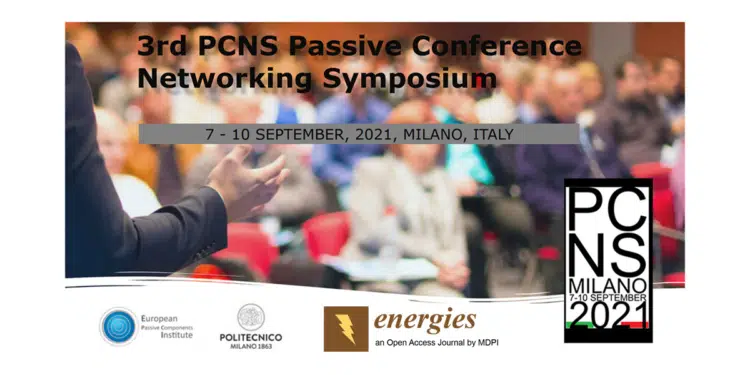Scientific research journal Energies is going to support the next 3rd PCNS Passive Components Networking Symposium as a media partner and sponsor. The 3rd PCNS will be held on September 7-10th 2021 in Milano, Italy hosted by Politecnico di Milano university.
Journal editors will select some PCNS papers to create a special issue of its magazine dedicated to passive components and PCNS. All selected PCNS 2021 papers will be published in open access form by the journal, after peer review. Submission to the magazine’s special issue is different from the proceedings and it can be indexed in Web of Science and Scopus thus it may bring a new added value, especially to academia PCNS presenters.
“The conference topic is closely related to the scope of our journal, and we would like to assist PCNS’s effort to bridge industrial and academia knowledge base on passive electronic components” said Ms. Estelle Chen, Energies Journal Section Managing Editor
“We highly value partnership with impacted scientific magazine Energies that may assist to bring recognition of presented passive component research work into an academic environment. Closer links between basic and applied research on passive components have still room to improve and such co-operation is one of potential steps to highlight its importance.” Add Tomas Zednicek, EPCI and PCNS organizing committee president.
PCNS accepts paper abstracts by extended deadline 14th April 2021.
About the Energies Journal
Energies is an open access journal of related scientific research, technology development, engineering, and the studies in policy and management and is published semi-monthly online by MDPI. Energies is indexed by the Science Citation Index Expanded (Web of Science), Ei Compendex, Scopus and other databases. The latest Impact Factor for 2019 is 2.702 and 5-Year Impact Factor: 2.822 (2019). http://www.mdpi.com/journal/energies.
About PCNS
PCNS Passive Components Networking Symposium is a bi-annual international symposium organized by EPCI European Passive Components Institute in co-operation with an European university 3rd edition of the PCNS Passive Components Networking Days Symposium is hosted by Department of Chemistry, Materials and Chemical Engineering “Giulio Natta” and Department of Electronics, Information and Bioengineering of Politecnico di Milano It is intended as a live event with speakers present with streaming options for virtual attendees. https://pcns.events/































